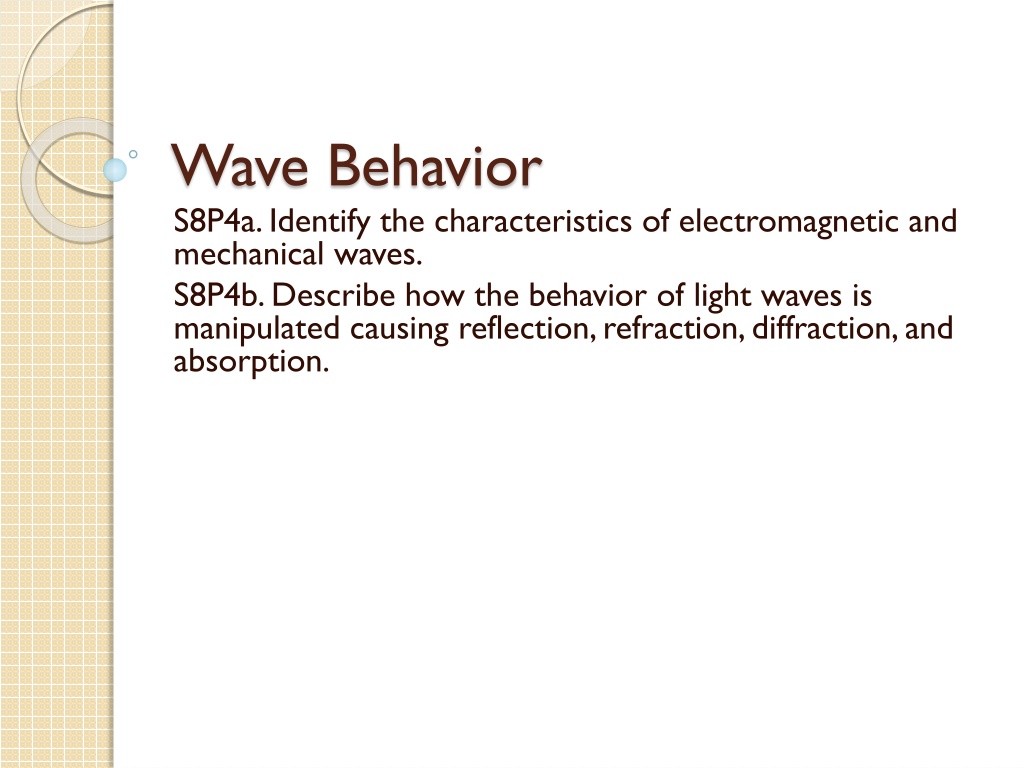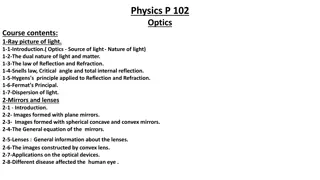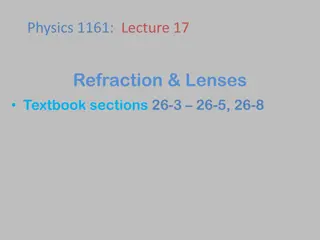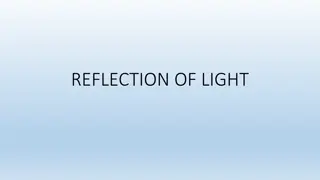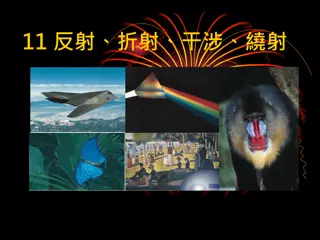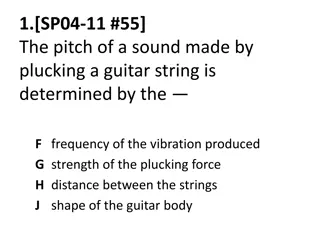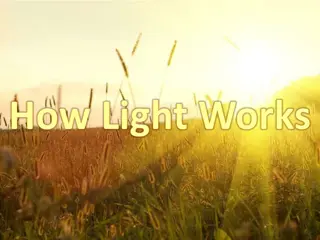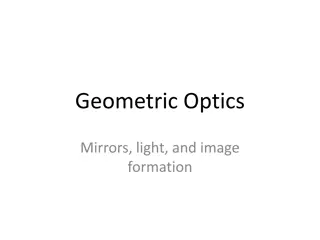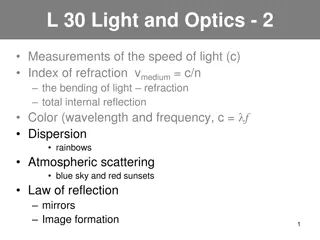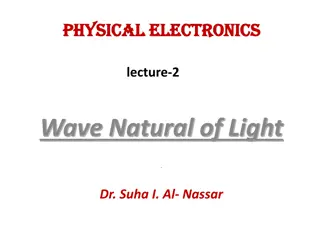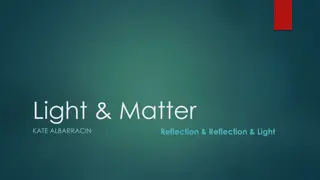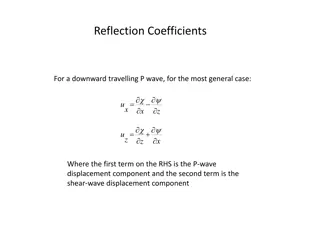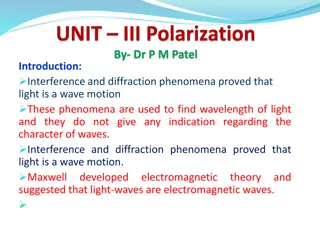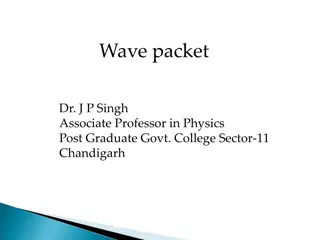Understanding Light Wave Behavior: Reflection and Refraction
Explore the characteristics of electromagnetic and mechanical waves along with how light waves can be manipulated through reflection and refraction. Discover how reflection occurs when waves bounce off surfaces and how refraction bends waves as they move between different mediums, affecting their speed and direction. Through clear explanations and illustrative images, gain insights into the behavior of light waves and how they interact with various mediums to create different effects.
Download Presentation

Please find below an Image/Link to download the presentation.
The content on the website is provided AS IS for your information and personal use only. It may not be sold, licensed, or shared on other websites without obtaining consent from the author. Download presentation by click this link. If you encounter any issues during the download, it is possible that the publisher has removed the file from their server.
E N D
Presentation Transcript
Wave Behavior S8P4a. Identify the characteristics of electromagnetic and mechanical waves. S8P4b. Describe how the behavior of light waves is manipulated causing reflection, refraction, diffraction, and absorption.
Reflection Reflection occurs when a wave strikes an object or surface and bounces off. An echo is reflected sound. Sound reflects from all surfaces. You see your face in a mirror or a still pond, because of reflection. Light waves produced by a light source such as the Sun or a light bulb bounce off your face, strike the mirror, and reflect back to your eyes.
Reflection (continued) When a surface is smooth and even the reflected image is clear and sharp. When light reflects from an uneven or rough surface, you can t see a sharp image because the reflected light scatters in many different directions.
Refraction Refraction is the bending of a wave as it moves from one medium into another. The speed of the wave can be different in different mediums. For example, light waves travel faster in air than in water. Refraction occurs when the speed of a wave changes as it passes from one substance to another.
Refraction (continued) A line that is perpendicular to the water s surface is called the normal. When a light ray passes from air into water, it slows down and bends toward the normal.
Refraction (continued) When the ray passes from water into air, it speeds up and bends away from the normal. The larger the change in speed of the light wave is, the larger the change in direction.
Color from Refraction Sunlight contains light of various wavelengths. When sunlight passes through a prism, refraction occurs twice: once when sunlight enters the prism and again when it leaves the prism and returns to the air. Violet light has the shortest wavelength and is bent the most. Red light has the longest wavelength and is bent the least.
Color from Refraction (continued) Each color has a different wavelength and is refracted a different amount. As a result, the colors of sunlight are separated when they emerge from the prism. Rainbows are created when light waves from the Sun pass into and out of raindrops.
Color from Refraction (continued) The colors you see in a rainbow are in order of decreasing wavelength: red, orange, yellow, green, blue, indigo, and violet.
Diffraction Diffraction is the bending of waves around a barrier. Sound waves diffract more than light waves. You can hear sound around a corner, but you can t see around corner.
Diffraction and Wavelength Light doesn t diffract much when passing through an open door because the wavelengths of visible light (400 to 700 billionths of a meter) are much smaller than the width of the door (1 meter). Sound waves that you can hear have wavelengths between a few millimeters and 10 m. A wave is diffracted more when its wavelength is similar in size to the opening.
When Waves Meet Waves pass right through each other and continue moving. While two waves overlap a new wave is formed by adding the two waves together. The ability of two waves to combine and form a new wave when they overlap is called interference.
Types of Interference When the crest of one wave overlaps the crest of another wave it is called constructive interference. The amplitudes of these combining waves add together to make a larger wave while they overlap. Destructive interference occurs when the crest of one wave overlaps the trough of another wave. The amplitudes of the two waves combine to make a wave with a smaller amplitude.
Waves and Particles When waves travel through a small opening, such as a narrow slit, the light spreads out in all directions. If particles are sent through the same slit they would continue in a straight line. Spreading, or diffraction, is only a property of waves.
Waves and Particles (continued) If waves meet, they reinforce or cancel each other, then travel on. If particles approach each other, they either collide and scatter or miss each other completely. Interference is a property of waves.
Summary Reflection Reflected sound waves can produce echoes. Reflected light rays produce images in a mirror. Refraction The bending of waves as they pass from one medium to another is refraction. Refraction occurs when the wave s speed changes.
Summary (continued) A prism separates sunlight into the colors of the visible spectrum. Diffraction and Interference The bending of waves around barriers is diffraction. Interference occurs when waves combine to form a new wave while they overlap. Destructive interference can reduce noise.
